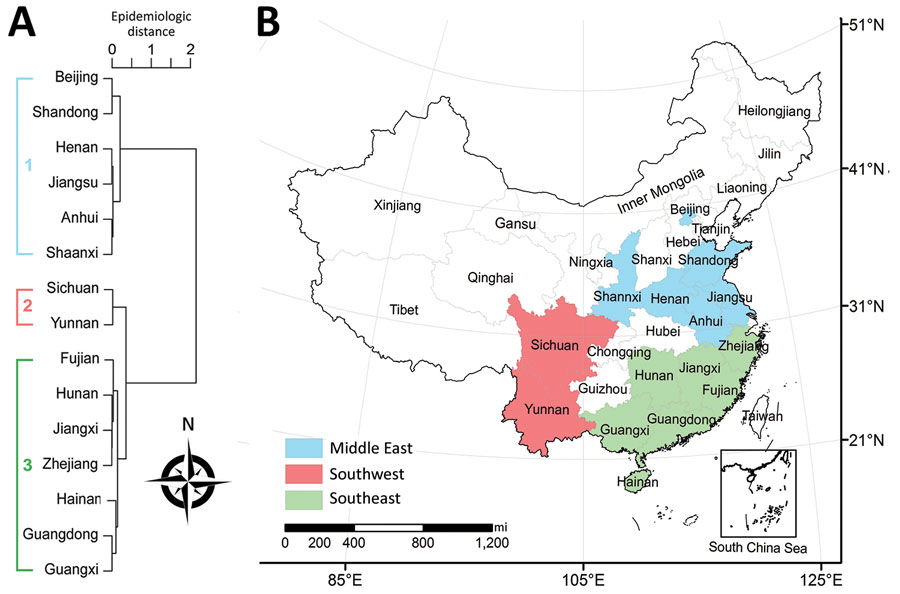Epidemiologic Changes of Scrub Typhus in China, 1952–2016
Zhongjie Li
1, Hualei Xin
1, Junling Sun
1, Shengjie Lai, Lingjia Zeng, Canjun Zheng, Sarah E. Ray, Nicole Davis Weaver, Liping Wang, Jianxing Yu

, Zijian Feng
2, Simon I. Hay, and George F. Gao
2
Author affiliations: Chinese Center for Disease Control and Prevention, Beijing, China (Z. Li, H. Xin, S. Lai, L. Zeng, C. Zheng, L. Wang, J. Yu, Z. Feng, G.F. Gao); Qingdao City Center for Disease Control and Prevention, Shandong, China (H. Xin); University of Southampton, Southampton, UK (S. Lai); University of Washington, Seattle, Washington, USA (S.E. Ray, N.D. Weaver, S.I. Hay); Chinese Academy of Sciences, Beijing (G.F. Gao)
Main Article
Figure 4

Figure 4. Epidemiologic regions of scrub typhus in China, 2006–2016. A) Epidemiologic regions based on hierarchical clustering, using the Pearson correlation coefficient matrix between average weekly scrub typhus time series of paired provinces that had a cumulative number of cases >100 in 2006–2016 combined. B) Map of identified epidemiologic regions identified by hierarchical clustering), e.g., middle-east (latitude range 31°–41°N and longitude range 105°–125°E), southwest (latitude range 21°–31°N and longitude range 95°–105°E), southeast of China (latitude range 21°–31°N and longitude range 105°–125°E). Other provinces had a combined total of <100 cases in 2006–2016.
Main Article
Page created: May 18, 2020
Page updated: May 18, 2020
Page reviewed: May 18, 2020
The conclusions, findings, and opinions expressed by authors contributing to this journal do not necessarily reflect the official position of the U.S. Department of Health and Human Services, the Public Health Service, the Centers for Disease Control and Prevention, or the authors' affiliated institutions. Use of trade names is for identification only and does not imply endorsement by any of the groups named above.
